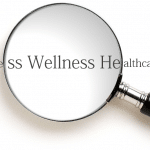Social media is where email was 10 years ago: a Wild West of shouty ads, “cute” pictures, and too-good-to-be-true sales pitches.
Email reaches more customers than FB and Twitter
Meanwhile, the old frontier of email has been settled: thanks to CAN-SPAM, we’ve actually asked for most of the commercial emails we get, and they’re also more informative, helpful, friendly, and approachable than ever.
That’s why these days, according to McKinsey, email has 40 TIMES the sales conversion rate of Facebook, Instagram and Twitter combined, and media consultant 33Across says that emails enjoy twice the “share rate” of social posts. Matter of fact, 70% of all emails are social interactions.
Email is the “feeder road” for dark social
“Dark social” refers to the fact that not every link shared on social media came from social media. Emails you send to your mailing list often provide high-relevance web links to a well-targeted and like-minded audience of likely prospects who then share the links on social. It’s “dark” because no one can tell that the link originally came from an email.
Email’s also a great way to share info and take your message viral. Given its reach, maturity, and value as a sales channel, you’d think it would be a cake walk for wellness businesses. Yet some shoot themselves in the foot.
Does this sound familiar? You’ve spent money setting up a web and email campaign extolling the virtues of a low carb, raw food, or paleo diet, only to find out that even your best customers are just not as into it as you are. How many times have you—overjoyed at your prospects’ interest in your workout program—sent them half a dozen megabytes of attachments or directed them to your website, only to never hear from them again?
How can this happen when there’s an obesity epidemic out there??!! Why isn’t this working for me?!
As they say in horror movies, the call is coming from inside the house. What we see above is missionary zeal. But what’s missing in every example is the social element: a supportive community, the desire to learn and get help from others, and your own cheerleading squad.
And yet, email does all these things for successful wellness businesses. If you’re not seeing that, ask yourself these hard questions:
Are you helping—or preaching? Prospects want to know that you “get” them, that they’re at the right place, and that you can help bring about life-transforming change in “bite sized” chunks. Does your message reinforce that? Or does it state an obvious problem without offering a tangible solution?
Are your emails developing a supportive bond with customers? Do they invite prospects to be part of a your community? Do they reinforce the idea that “you folks GET me”? Do they encourage and enable change in customers’ lives, and celebrate their successes?
Finally, does your email “listen”? Does it proactively answer real questions, or does it overwhelm customers with product features, self-praising videos, or strongly held and polarizing opinions? If so, you’re probably missing cries for help.
By thinking of email not as a sales channel but as a tool to build and nurture a loyal customer community, you can fully leverage the social potential of email, spread the gospel of wellness, and change lives for the better.



